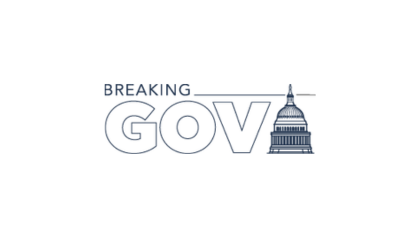
Given the hype around cloud computing, you could be forgiven for thinking that everyone in the government contracting market agrees on what, exactly, it is. They don’t.
The term not only embraces several different types of computing, but the market for each is different.
In fact, a recent Deltek analyst report, Federal Cloud Computing Services Outlook 2012-2017, makes clear, contractors selling each of the three major types – Software as a Service (SaaS), Infrastructure as a Service (IaaS) and Platform as a Service (PaaS) – face differing prospects over the next six years.
To be clear, the market for cloud services is one of the few bright spots in an otherwise dim contracting market. The analysis finds that the contractor-addressable cloud computing market (the amount federal agencies will spend on the cloud) may jump from $734 million this year to nearly $3.2 billion in fiscal year 2017 – even as agency budgets contract.
Three Services, Varying Outlooks
The federal embrace of the cloud will not be uniform across the three types, according to Deltek analysts. Priorities will shift, causing changes in government buying patterns for the three cloud types.
Software as a Service -As the easiest entry point into cloud, SaaS solutions are the one most agencies are willing to attempt. Email, data modeling and simulation, collaboration tools and document/record management are just a few examples of agency implementations. The contractor-addressable market for SaaS is already the largest of the three types, and will remain so through at least 2017. However, analysts expect growth to level off in the out years of the forecast as security and standards improvements shift attention to IaaS and PaaS, resulting in a SaaS compound annual growth rate (CAGR) of 21% between now and 2017.
Infrastructure as a Service -When the “heavy lifting” of data center consolidation begins in earnest, agencies will seek more infrastructure cloud services to offset the costs of infrastructure equipment ownership. Agencies have invested in IaaS solutions such as enterprise data storage, development and testing services, and data center services. Infrastructure cloud services will likely grow more slowly for the next several years, but accelerate sharply just as SaaS begins to plateau. IaaS, analysts project, will see a CAGR of 35% by 2017.
Platform as a Service – However, it is the smallest of the three markets – PaaS – that shows the greatest potential for growth. High levels of customization have been a trademark of agencies, and PaaS provides the environment to build custom applications and websites while still enjoying the cost benefits of cloud computing. For example, some agencies have invested in PaaS for mobile applications, identity proofing, simulation, and web content management.The PaaS market will show steady growth from now until approximately 2015, then decline slightly, analysts say. By the end of the forecast period, however, it will have grown by as much as 40%.
One of the most powerful forces influencing the growth is a paradox facing agency IT buyers.
Cloud and the Data Center
Several factors control the growth of cloud market segments, but one of the most powerful forces influencing the growth is a paradox facing agency IT buyers: Conflicting pressures tell agencies to move into the cloud quickly, and at the same time, have agencies hold onto their existing solutions longer.
In February 2010, the Office of Management and Budget ordered agencies to begin consolidating data centers. Later that year, OMB and the Federal CIO launched their “cloud first” policy, encouraging agencies to employ cloud-based solutions first, before engaging traditional IT efforts. The policy was intended to prevent agencies from making additional investments in IT infrastructure, which would slow progress toward the cloud.
Data center consolidation helps to make agencies cloud-ready. Technologies like server virtualization help enable agencies to shut down redundant data centers, and also laid the foundation for cloud computing.
However, the steps that enable an agency to close data centers also streamline, integrate, and make more efficient the very IT infrastructure that “cloud first” was intended to retire. Some agencies, in working to close data centers, will inevitably streamline their IT infrastructure so much that they face less need to replace it.
With agency budgets contracting, many will not spend money on cloud-based solutions to replace infrastructure they’ve just improved.
Contractor Takeaways
For contractors, a few key lessons emerge:
The first is to look beyond the low-hanging fruit. The cloud market with the easiest point-of-entry for agencies is the one with the lowest long-term growth rate for contractors. Competition in the SaaS field may become intense, with the growth of spending slowing over time. The much smaller PaaS market will actually see the most growth by 2017.
The second is that convincing customers of the long-term savings of IaaS and PaaS solutions will be vital to winning in those markets. Agency buyers, pinching pennies due to declining budgets and the nearly certain Continuing Resolutions we’re likely to see in an election year, may not see the immediate need to spend to replace the infrastructure they’ve improved through consolidation.
But their best opportunity to save on PaaS and IaaS solutions is coming in just a few years – and the contractors who build visible expertise in it now will be the ones they call when the time comes.
Kyra Kozemchak is senior research analyst at Deltek and a member of Deltek’s Federal Industry Analysis team, which provides strategic and tactical assessments of federal IT markets, including software, information security, communications, network services and cloud computing services along with insights into government spending, market trends, policy and legislation, and business development best practices.